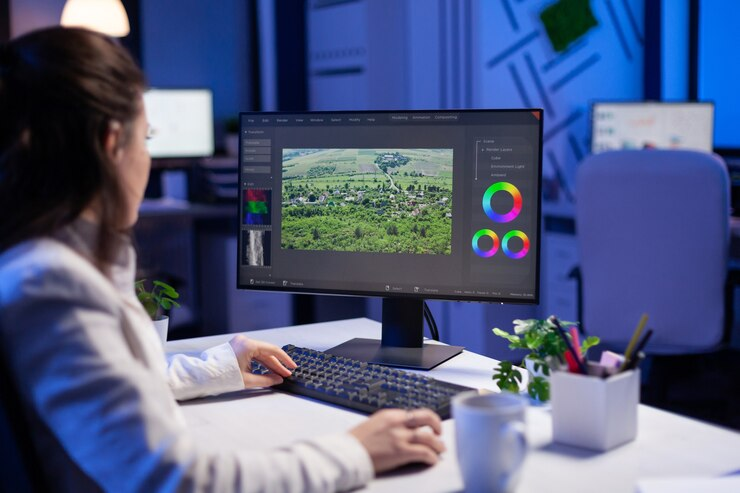In the realm of animation, where creativity meets technology, the integration of visual effects (VFX) has revolutionized the landscape of 2D animation services. Traditionally, 2D animation relied on hand-drawn techniques to bring characters and stories to life on screen. While this art form continues to captivate audiences with its charm and simplicity, the introduction of visual effects has opened up new dimensions of creativity and storytelling possibilities for animation studios worldwide.
Evolution of 2D Animation Services
Animation has always been a powerful medium for storytelling, dating back to the early days of hand-drawn animations like Disney classics. These animations, painstakingly crafted frame by frame, enchanted audiences with their fluidity and expressive characters. However, as technology advanced, so did the techniques used in animation studios.
The transition from traditional cel animation to digital 2D animation marked a significant leap forward. Digital tools enabled animators to streamline production processes, offering greater flexibility and efficiency in creating animated content. This evolution laid the groundwork for the integration of visual effects, blending traditional 2D animation with modern digital techniques to enhance visual appeal and narrative depth.
The Role of Visual Effects in Modern Animation
Visual effects encompass a wide range of techniques and tools used to create dynamic visuals that enhance the overall quality of animated content. In 2D animation services, VFX serve multiple purposes, from enhancing character movements and backgrounds to creating stunning visual sequences that captivate audiences. Here’s how visual effects contribute to elevating 2D animation:
1. Enhanced Character Animation
In traditional 2D animation, characters are drawn and animated frame by frame to simulate movement. Visual effects can augment this process by adding dynamic lighting effects, shadows, and textures that give characters a three-dimensional appearance without compromising the flat, stylized look of 2D animation. This technique, known as 2.5D animation, combines the charm of traditional animation with the visual depth of modern CGI, resulting in characters that pop off the screen.
Animation studios leverage advanced software tools to achieve seamless integration of VFX into 2D animation workflows. By manipulating layers and applying digital effects, animators can enhance character expressions, gestures, and interactions, making them more lifelike and engaging for viewers.
2. Environmental Effects and Atmosphere
Beyond character animation, visual effects play a crucial role in shaping the world in which animated stories unfold. Backgrounds, landscapes, and atmospheric elements such as weather effects and lighting are meticulously crafted to establish mood, tone, and narrative ambiance. Whether it’s a bustling cityscape, a serene countryside, or a fantastical realm, VFX techniques allow animators to create immersive environments that transport audiences into the heart of the story.
Animation studios utilize digital compositing and rendering techniques to achieve realistic environmental effects in 2D animation. By integrating layers of digital textures, lighting effects, and particle simulations, artists can breathe life into static backgrounds, enhancing visual storytelling and creating a sense of depth and dimensionality.
3. Special Effects and Cinematic Sequences
Visual effects empower animation studios to push the boundaries of creativity and visual spectacle. From dynamic action sequences to dazzling special effects, VFX techniques amplify the impact of key moments in animated narratives. Explosions, magical spells, and intricate visual choreography are brought to life through a combination of hand-drawn animation and digital effects, delivering breathtaking moments that resonate with audiences of all ages.
The integration of VFX in 2D animation services also extends to post-production processes such as color grading and editing. By refining colors, contrast, and visual effects timing, animators can achieve a polished, cinematic look that enhances the overall viewing experience. This attention to detail ensures that every frame of animation is visually compelling and aesthetically cohesive, reinforcing the narrative impact of the story being told.
Innovation in Animation Studios
Animation studios are at the forefront of innovation, continually pushing the boundaries of what is possible in visual storytelling. By embracing cutting-edge technology and blending traditional craftsmanship with modern techniques, these studios redefine the art of animation, captivating global audiences with their creativity and ingenuity.
1. Collaborative Workflow and Creative Synergy
The synergy between animators, visual effects artists, and technicians is essential in realizing the full potential of VFX in 2D animation services. Collaborative workflows enable seamless integration of hand-drawn animation with digital effects, ensuring that each frame maintains artistic integrity while enhancing visual fidelity. Animation studios foster environments where creativity flourishes, encouraging artists to explore new techniques and push artistic boundaries.
2. Technological Advancements and Digital Tools
Advancements in digital technology have democratized access to powerful animation tools, empowering artists to bring their creative visions to life with unprecedented precision and efficiency. Software solutions such as Adobe Animate, Toon Boom Harmony, and Autodesk Maya provide animation studios with versatile platforms for 2D animation production and visual effects integration.
These tools enable animators to experiment with lighting, shading, and particle effects, enriching animated sequences with cinematic flair. Real-time rendering capabilities and GPU-accelerated processing further streamline production workflows, allowing animation studios to meet tight deadlines without compromising on quality.
Future Trends and Innovations
Looking ahead, the future of 2D animation services is poised for continued innovation and growth. As technology evolves, animation studios will explore new avenues for storytelling, leveraging augmented reality (AR), virtual reality (VR), and interactive media to engage audiences in immersive narrative experiences. Visual effects will play an integral role in shaping these innovations, enhancing interactivity and realism while preserving the timeless appeal of hand-drawn animation.
Conclusion
In conclusion, the integration of visual effects has transformed 2D animation services, offering animation studios unprecedented creative possibilities and technical capabilities. From enhancing character animation and environmental effects to elevating cinematic sequences, VFX techniques enrich the visual storytelling experience, captivating audiences with their imagination and artistry.
As animation continues to evolve, driven by innovation and technological advancements, animation studios remain at the forefront of this transformative journey. By embracing the synergy between traditional craftsmanship and digital innovation, these studios pave the way for a future where storytelling knows no bounds, and the magic of animation continues to inspire generations worldwide.

